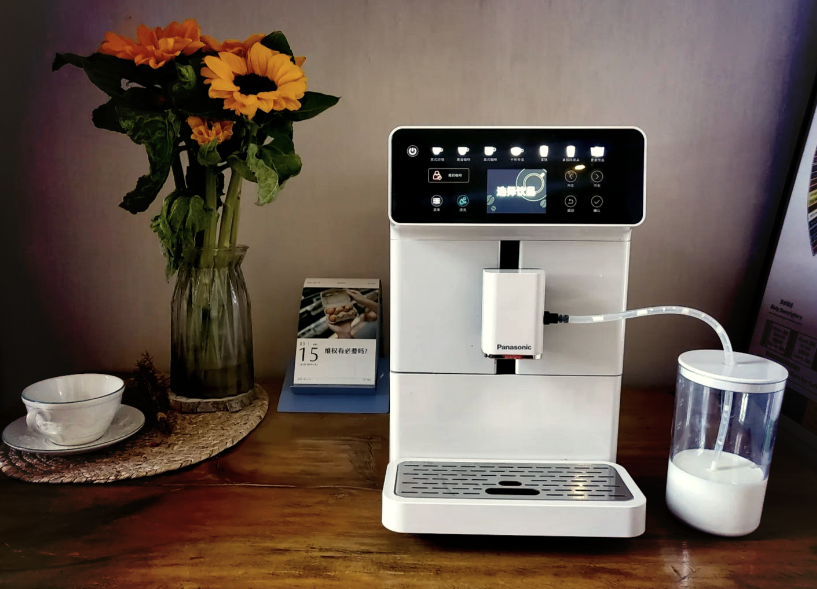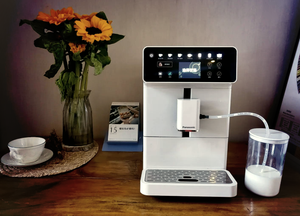
How to inspect a coffee machine? Factory inspection and quality control service
The coffee machine, as an indispensable electrical appliance in modern office and household settings, its quality and safety directly affect the user's experience and personal safety. The quality inspection of coffee machines is a systematic project, covering the entire process from raw material entry to finished product exit. This article will deeply analyze the factory inspection and inspection process, quality control key points, and testing standards of coffee machines, providing comprehensive reference guidelines for purchasers, quality inspectors, and production enterprises.
I. Basic Knowledge of Coffee Machines and Preparations Before Inspection
(1) Working Principle and Classification of Coffee Machines
Coffee machines are electrical appliances that produce coffee through electric heating and pressure extraction. They are mainly divided into drip-type, capsule-type, semi-automatic and fully automatic types. Their core technologies include heating systems, water pump devices, temperature control systems and coffee extraction systems.
(2) Preparations for Factory Inspection and Goods Inspection
Technical document review: Check product specifications, electrical safety certifications (UL/CE/CCC), and material food safety certifications
Verification standard confirmation: Clearly define the applicable safety standards (such as UL1082, IEC60335-2-15, etc.) and the customer's specific requirements
Calibration of testing equipment: Ensure that devices such as leakage current testers, power meters, and withstand voltage testers are within their calibration validity period.
Sampling plan determination: Based on the batch size, the sampling plan is determined in accordance with ANSI/ASQ Z1.4 (formerly MIL-STD-105)
II. Key Points for Factory Audit of Coffee Machines
(1) Quality Management System Audit
Check whether the factory has established a complete quality management system (ISO9001 certification)
Review the supplier management procedures, particularly the evaluation records of key components such as heating tubes, temperature controllers, and water pumps.
Review the production process control documents and their implementation status, with a particular focus on key procedures such as electrical assembly, waterway connection, and final product testing.
Evaluate the effectiveness of the control procedures for non-conforming products and the corrective and preventive measures.
(2) Key points of on-site production inspection
Incoming material inspection area (IQC): Review the inspection records of critical components (heating elements, temperature controllers, plastic parts, etc.)
Production line layout: Evaluate the effectiveness of anti-static measures and the completeness of grounding systems
Key process control: Focus on processes such as electrical connections, waterway sealing, and safety compliance testing.
Aging test area: Check whether the aging test time, temperature and load comply with the process requirements.
Finished Product Inspection Area (FQC): Ensure that all inspection equipment is complete and functioning properly, and that the inspection records are complete and traceable.
III. Inspection Standards and Methods for Coffee Machine Safety
(1) Electrical Safety Testing
Leakage Current Test:
Test conditions: 120V/60Hz power supply, under normal operating conditions
Passing standard: The maximum leakage current should not exceed 0.5mA.
Recording requirements: Record the data during power-on for 0-5 seconds, 5-10 minutes, more than 10 minutes (hot state), and after power-off.
Input power test:
Test conditions: Under normal load operation conditions
Qualification standard: The measured power should be within the range of 90% to 105% of the nominal power.
Data recording: Voltage, current and power values at the moment of power-on, during the hot state, and when reaching the rated power.
Pressure resistance test:
Test conditions: Under hot-state conditions, a 1000V AC voltage is applied continuously for 1 minute.
Passing standard: No breakdown phenomenon
Test method: Wrap the shell with tin foil, and apply the test voltage between the L/N terminals and ground.
(2) Environmental Adaptability Test
Dampness Test:
Test conditions: placed at a temperature of 32℃ and humidity of 88% for 48 hours.
Subsequent tests: Repeat leakage current and withstand voltage tests
Passing criteria: Pressure resistance test passed, leakage current less than 0.5mA
Temperature rise test:
Test mode: Four working mode temperature rise test
Test conditions: 120V/60Hz, five complete working cycles
Passing criteria: The temperatures at each test point meet the requirements of UL1082 Table 33.1.
IV. Mechanical Structure and Reliability Testing
(1) Structural Safety Test
Power cord tensile test:
Test method: Apply a force of 156N for 1 minute.
Passing standard: The indentation distance of the power cord should not exceed 2mm.
Power cord pull test:
Test method: Apply a force of 26.7N at the 25.4mm position of the outlet.
Qualification standard: No mechanical damage, and the copper wire should not be exposed.
(II) Stability Test
15-degree inclination test:
Test conditions: Fill the cup with water and place it at different angles.
Qualification standard: It must not tip over or slide at any angle.
Impact Test:
Testing method: 0.75 ft-lbf impact force impacting the prone-to-collapse point
Passing criteria: If the container topples over, the liquid flow rate is less than 133 ml/s; if it does not topple over, the outflow volume is less than 104 ml/s.
V. Exceptional Condition Testing
(1) Overflow Test
Testing Method:
Use hard water (0.5g calcium sulfate per liter of water)
Pour into the cup through a 9.5mm funnel
Immediately conduct leakage current and withstand voltage tests after the test.
Qualification Criteria:
Pressure test passed
The leakage current is less than 5mA.
(2) Dry-burning Test
Test Method:
Short-circuit temperature controller, retaining the thermal cutoff function
Series 3A fuse
Fill the cup with hard water and then power it on until it reaches the final state.
Qualification Criteria:
The outer shell did not catch fire.
The 3A fuse has not blown.
The leakage current is less than 5mA.
Pressure test passed
VI. Durability Test
(1) Life Test
Overload Test for Thermostat:
Test conditions: 120% rated voltage, operation 50 times (10 times per minute)
Passing criteria: The fuse is not broken and the thermostat is not malfunctioning.
Overall machine cycle test:
Testing method:
80 cycles: 0.025% NaCl solution is heated and kept warm for 30 minutes
20 cycles: Boil coffee and keep it warm for 30 minutes
Subsequent verification: Repeat leakage current, withstand voltage, and overflow tests
(2) Component Reliability Testing
Component Failure Test:
Testing method: Short-circuit the key components that affect safety one by one
Passing criteria: The fuse is not broken, no flame is emitted, and the withstand voltage test is successful.
Oven baking test:
Test conditions: 70℃ or the maximum temperature for the temperature rise test is +10℃
Test duration: 7 hours
Qualification standard: No shrinkage or melting phenomenon
VII. Inspection Rules and Quality Determination
(1) Defect Classification Criteria
Fatal Defects: Electrical safety failure, fire risk, electric leakage hazard
Serious defects: Function failure, performance not up to standard, major structural issues
Minor defects: Appearance flaws, packaging issues, minor functional abnormalities
(2) Sampling Inspection Plan
Normal Inspection: Performed according to ANSI/ASQ Z1.4 General Inspection Level II
Strict inspection: Conducted when quality fluctuates.
Relax inspection: When the quality is stable, it can be carried out with the client's consent.
VIII. Packaging, Storage and Transportation Requirements
(1) Packaging Inspection Points
Inner Packaging: Adequate shockproof materials and complete accessories
Outer packaging: The cardboard box is of sufficient strength and the labels are clear.
Documents and materials: The user manual, warranty card and certificate of conformity are all complete.
(II) Storage and Transportation Management
Storage environment: Dry and well-ventilated, avoiding high temperature and high humidity
Stacking requirements: Stack according to the specified number of layers to prevent damage from compression.
Transport protection: Complete measures against shock, moisture and tipping are in place.
IX. Conclusion
The quality inspection of coffee machines is a multi-dimensional systematic project that encompasses electrical safety, mechanical structure, thermal performance, and environmental adaptability. Quality inspection personnel need to have a comprehensive understanding of product standards, inspection methods, and common quality issues in order to effectively control product quality. Manufacturing enterprises should establish a complete quality management system, especially strengthening control in aspects such as electrical safety design, temperature control accuracy, and protection against abnormal situations, to ensure that the products meet international standards and customer requirements.
Share this product

How to inspect a coffee machine? Factory inspection and quality contro
The coffee machine, as an indispensable electrical appliance in modern office life, its quality and safety directly affect the personal safety of users.
